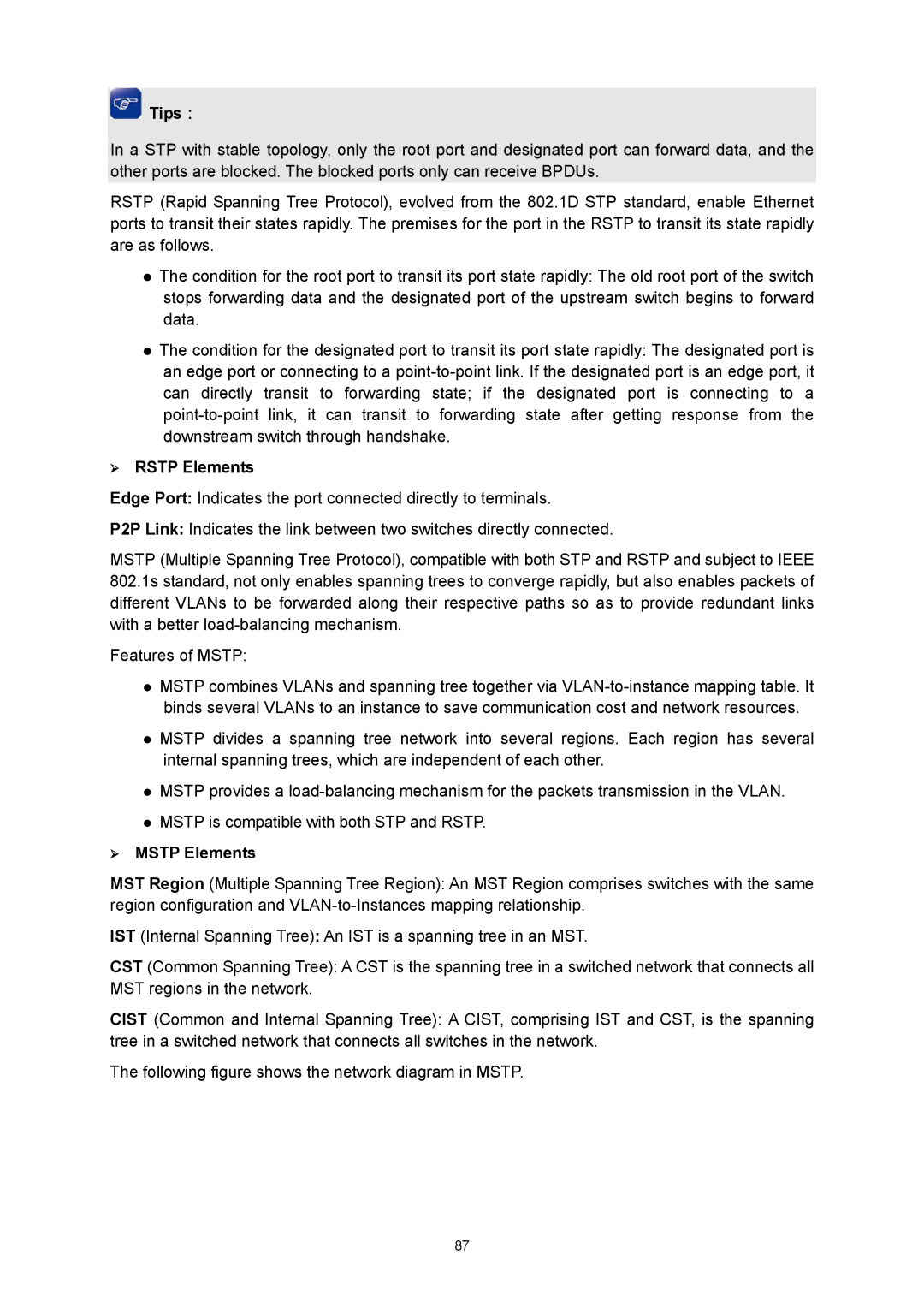
 Tips:
Tips:
In a STP with stable topology, only the root port and designated port can forward data, and the other ports are blocked. The blocked ports only can receive BPDUs.
RSTP (Rapid Spanning Tree Protocol), evolved from the 802.1D STP standard, enable Ethernet ports to transit their states rapidly. The premises for the port in the RSTP to transit its state rapidly are as follows.
zThe condition for the root port to transit its port state rapidly: The old root port of the switch stops forwarding data and the designated port of the upstream switch begins to forward data.
zThe condition for the designated port to transit its port state rapidly: The designated port is an edge port or connecting to a
¾RSTP Elements
Edge Port: Indicates the port connected directly to terminals.
P2P Link: Indicates the link between two switches directly connected.
MSTP (Multiple Spanning Tree Protocol), compatible with both STP and RSTP and subject to IEEE 802.1s standard, not only enables spanning trees to converge rapidly, but also enables packets of different VLANs to be forwarded along their respective paths so as to provide redundant links with a better
Features of MSTP:
zMSTP combines VLANs and spanning tree together via
zMSTP divides a spanning tree network into several regions. Each region has several internal spanning trees, which are independent of each other.
zMSTP provides a
zMSTP is compatible with both STP and RSTP.
¾MSTP Elements
MST Region (Multiple Spanning Tree Region): An MST Region comprises switches with the same region configuration and
IST (Internal Spanning Tree): An IST is a spanning tree in an MST.
CST (Common Spanning Tree): A CST is the spanning tree in a switched network that connects all MST regions in the network.
CIST (Common and Internal Spanning Tree): A CIST, comprising IST and CST, is the spanning tree in a switched network that connects all switches in the network.
The following figure shows the network diagram in MSTP.
87
